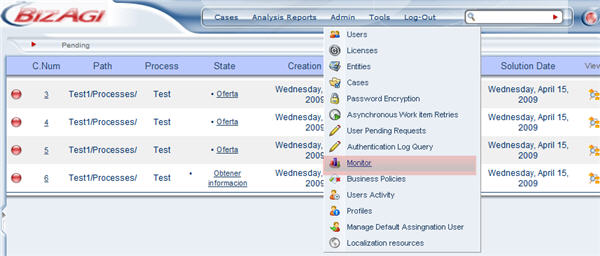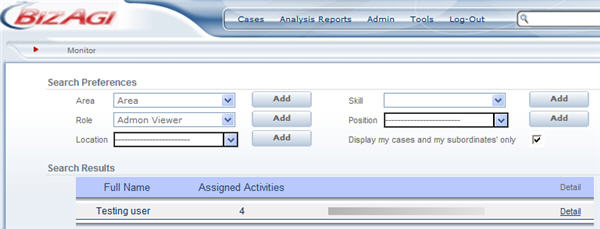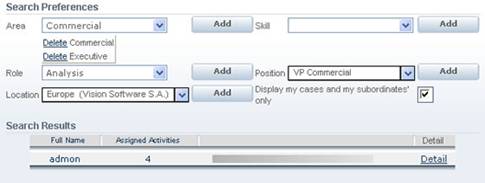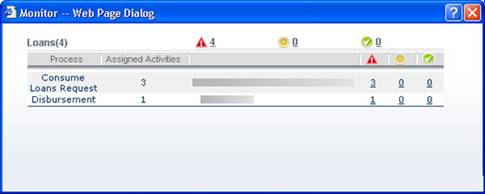Monitor
From Business Process Management, BPM and Workflow Automation Wiki | BizAgi BPMS
<keywords content="keywords"> audit </keywords>
Contents |
Monitor
In this section of the Web application, the administrator or a user who has access to this page (for further information go to Authorization) can view the distribution of cases of each of the system users.
Click on the Admin option in the Main Menu of the web application. Then select the Monitor option.
A list is displayed for each user, with all the pending activities. The case search can be carried out in accordance with the following criteria:
If no elements are added to the search preferences, the search results will return information about all the users. If a new criterion is added, only the users that meet the combinations selected will be shown.
Click on the Display my cases and my subordinate's only check box, to obtain the number of cases in accordance with this condition.
How to Set Up the Search
1. Select one of the search preferences (area, role, location, skill) and click on an element from the preference chosen.
2. Click on Add to include the search preferences
The elements included in the configuration appear below each search preference; the Delete option is next to each record to erase any undesired search preferences.
Search Results
After including the set of search preferences, the system updates the results
|
Example: The Commercial and Executive areas have been added as preferences when setting up the search, in addition to the Analysis role, VP Commercial Position and Europe Location. The search results show the users in accordance with the preferences chosen. |
The Search Results show the details of the cases assigned to each user. Details of the results include the number of cases assigned and their status (expired, expires today, expires in the future), grouped together by process and application. They also show the total number of cases for the application and the processes.
A hierarchical summary of urgent cases is shown: The sub-processes are grouped within the parents that created them in the web application on the expired cases screen.
<comments />





